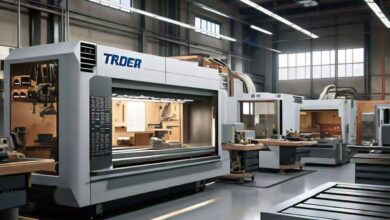The Role of Technology in Modern Construction: Innovations for Builders

In recent years, the construction industry has experienced a technological revolution, significantly transforming how builders in fulham approach projects. From design to execution, technology enhances efficiency, safety, and sustainability, enabling builders to meet the demands of modern society while overcoming traditional challenges. Here, we explore some key innovations that are reshaping the landscape of construction.
1. Building Information Modeling (BIM)
One of the most transformative technologies in construction is Building Information Modeling (BIM). This digital representation of a building allows architects, engineers, and builders to collaborate more effectively. BIM enables stakeholders to visualize a project in three dimensions, anticipate potential issues, and streamline workflows. By using BIM, builders can simulate various scenarios, leading to better decision-making and minimizing costly changes during construction.
2. Drones
Drones have become invaluable tools for builders, providing aerial insights that enhance project management and site assessment. Equipped with high-resolution cameras and sensors, drones can capture real-time data on construction progress, monitor site conditions, and conduct surveys with unparalleled accuracy. This aerial perspective not only improves safety by reducing the need for workers to perform hazardous tasks but also enables more efficient planning and resource allocation.
3. 3D Printing
The rise of 3D printing in construction is revolutionizing how buildings are designed and constructed. This technology allows for the rapid production of components and even entire structures, reducing waste and lowering costs. Builders can create complex designs with precision, which traditional construction methods may find challenging. Moreover, 3D printing can significantly decrease the time it takes to complete projects, addressing the industry’s persistent delays.
4. Prefabrication and Modular Construction
Prefabrication and modular construction involve assembling components off-site before transporting them to the final location for assembly. This method reduces on-site labor and construction time, as many elements can be built simultaneously in a controlled environment. Innovations in modular construction allow for more sustainable practices, as builders can optimize materials and minimize waste. This approach is not only efficient but also enables better quality control.
5. Smart Technologies and IoT
The Internet of Things (IoT) is making its mark on the construction industry through smart technologies. Connected devices can monitor equipment usage, track material consumption, and assess site conditions in real-time. This data-driven approach helps builders optimize resource management, enhance safety protocols, and ensure timely project completion. For instance, smart sensors can alert teams to equipment malfunctions or safety hazards, facilitating proactive measures before issues escalate.
6. Virtual Reality (VR) and Augmented Reality (AR)
Virtual reality (VR) and augmented reality (AR) technologies are changing how builders visualize and interact with construction projects. VR allows stakeholders to immerse themselves in a virtual representation of the building, providing an opportunity to explore spaces before they are constructed. AR, on the other hand, overlays digital information onto the physical world, assisting builders in understanding complex designs and ensuring accurate placement of components. These technologies enhance communication and collaboration among teams, leading to more informed decision-making.
Conclusion
The integration of technology in modern construction is not just a trend; it’s a necessity for builders aiming to thrive in an increasingly competitive market. Innovations like BIM, drones, 3D printing, prefabrication, smart technologies, and VR/AR are reshaping how construction projects are planned and executed. By embracing these advancements, builders can improve efficiency, reduce costs, and deliver high-quality results, ultimately meeting the evolving needs of clients and communities. As the industry continues to evolve, staying ahead of technological trends will be crucial for builders looking to succeed in the future. Read For More Information Click Here.





